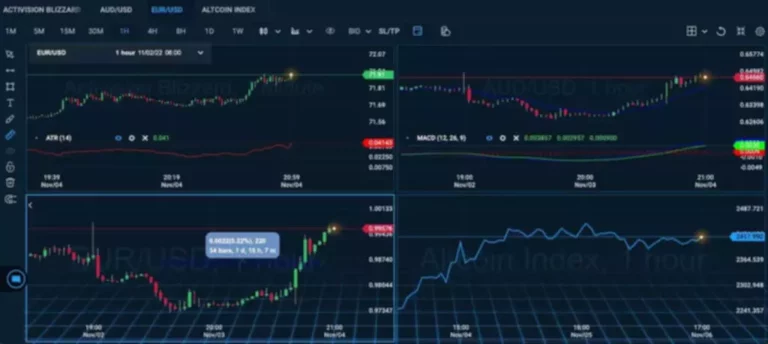Content
Using direct orders as the benchmark, roughly 20% execute at the mid-price or better (with an EFQ of 0% or better). Consistent with the notion that PFOF can benefit retail investors, more than 75% of orders routed to TD Ameritrade execute at the mid-price or better. In contrast, only 25% of orders routed to Robinhood execute at the mid-price or better—which is not statistically different from that of the benchmark. Put another way, I find that Robinhood does not provide PI after controlling for the true market conditions. Saxo executes equity pfof meaning orders using smart order routing (SOR) technology, which sources liquidity from multiple venues, including regulated exchanges and MTFs, to optimise execution rates and fill ratios. SOR is an algorithm that automatically compares execution prices for any given buy or sell order.
- Market makers would share a portion of their profits with brokerages that routed orders directly to them.
- The UK, EU, and Canada have already banned PFOF, with Australia enacting temporary prohibitions while authorities consider a total ban.
- These amendments expanded the scope of the original rule, leading to what is currently known as Rule 606(a).
- The market makers execute the trade, and gives the brokerage a tiny portion of the trade value as a way to thank the brokerage for sending business their way.
- Market makers play a vital role on Wall Street, as they create liquidity in the market.
- If they are profiting from PFOF, do they have practices in place to ensure theyre keeping the investors best interest at heart?
Global Regulation Tomorrow Plus: EMEA insights series: Episode 17 – EU PFOF
All clients will directly engage with Saxo Bank A/S and all client agreements will be entered into with Saxo Bank A/S and thus governed by Danish Law. The full PFOF ban is a positive step but European regulators must ensure it is not the only success story in its attempts to become the leading capital market across the globe. Each month we will publish a monthly issue update, summarizing developments on progress on key issues, and highlighting ways to take action. In addition, we will send out alerts when important advocacy opportunities are identified.Sign up with your email address to support our movement – your email address will never be shared or sold and we will contact you exclusively for purposes of https://www.xcritical.com/ advocacy. This note is for guidance only and should not be relied on as legal advice in relation to a particular transaction or situation. Please contact your normal contact at Hogan Lovells if you require assistance or advice in connection with any of the above.
A Beginner’s Guide to Investing: A Few Tips to Get Started

Allowing PFOF to continue, the SEC argued at the time, fosters competition and limits the market power of exchanges. “They get the data, they get the first look, they get to match off buyers and sellers out of that order flow,” Gensler said regarding the market makers that pay for order flow. At the same time, it gives them an advantage over other investment firms regulated in countries where PFOF is not allowed. Through European passporting it’s now very easy to market and offer services in all countries within the European Union (EU) while being regulated by only one of the Member States. Further, many of the market makers to whom order flow is sold are hedge funds.
Increase in market liquidity and competition
Our community members can follow friends and domain experts to see what they are investing in, exchange ideas and improve financial literacy. Nowadays, investors are raising the bar for brokerages, urging transparency in business practices so they know how a company is profiting off of them and whether or not they like it. The market makers execute the trade, and gives the brokerage a tiny portion of the trade value as a way to thank the brokerage for sending business their way. When a brokerage receives a stock market order, they manage the deal through a clearing firm, which routes orders. The clearing firm is responsible for making sure everything goes smoothly between the brokerage, market maker, and exchange.
Market makers would share a portion of their profits with brokerages that routed orders directly to them. Because of the controversy, the European Union has decided to ban payment for order flow from 2026 onwards. Until then, member states can allow PFOF but only for clients in that member state. So Trade Republic can earn money through PFOF for its German clients until 2026, but not for its Belgian clients for instance. The SEC proposed Rule 615, the “Order Competition Rule,” which would require broker-dealers to auction customer orders briefly in the open market before executing them internally or sending them to another trading center. This is intended to allow others to act on these orders, providing greater competition and potentially better results for investors.

However, it’s far more complicated to check if a brokerage is funneling customers into options, non-S&P 500 stocks, and other higher-PFOF trades. While harder to show (the correlation of massive increases in trades with low- or no-commission brokers and retail options trading isn’t causation) this poses a far greater conflict of interest than the one typically discussed. Regardless, this is still an astounding change over the same period in which low- or no-commission brokerages came on the scene. Just before the pandemic, about a third of the equity options trading volume was from retail investors.
This was meant to promote competition among trading venues, which should lead to better prices for investors. The Regulation National Market System (NMS), enacted in 2005, is a set of rules aimed at increasing transparency in the stock market. Most relevant here are the rules designed to ensure that investors receive the best price execution for their orders by requiring brokers to route orders to achieve the best possible price. Most estimates suggest that about half of all equity options trades by volume now come from retail investors, with estimates from the New York Stock Exchange in December 2023 putting it at 45% in July of that year.

In addition, broker-dealers must conduct “regular and rigorous” reviews of the execution quality of customer trades if they do not conduct individual compliance reviews of every transaction instead. Deposits into this account are used to purchase 10 investment-grade and high-yield bonds. The Bond Account’s yield is the average, annualized yield to worst (YTW) across all ten bonds in the Bond Account, before fees.
As other brokerages were forced to cut commissions to compete, PFOF became a greater proportion of a brokerage’s income. Near-0 % interest rates exacerbated this during the pandemic, though rate hikes have boosted broker revenue from client money parked in their accounts. Still, any moves by the SEC to curtail PFOF would affect millions of investors. Examining PI across brokers, I find economically and statistically significant heterogeneity. Figure 1 presents the proportion of orders which execute at a given EFQ or better.
There’s also a concern about transparency and whether investors fully understand how their trades are being handled. Brokers-dealers would have to perform reasonable diligence to find the best market for securities and the most favorable terms for their clients. “We specifically recommend that at an appropriate time the equity pre-trade tape is expanded to include five levels of depth of the order book. Despite this, the Association for Financial Markets in Europe (AFME) called for “more ambition” from the EU and member states in implementing a successful capital markets union. In our EMEA regulatory insights series colleagues from our EMEA offices provide an update on some of the key regulatory issues they are seeing in their local market.
Many top brokers report high levels of price improvement—on as many as 90% of their orders. It might be a penny (or even a fraction of a penny) per share, but improvement is improvement. Because retail order flow is seen as the bread and butter of the market maker’s operation, it’s in the market maker’s best interest to attract that order flow.
There have also been questions surrounding the accuracy of price improvement data, as much of it is compiled by the brokers themselves. Payment for order flow has evolved greatly, to the benefit of the retail stock and option trader—at least, in terms of reduced commissions. Suppose you (as a retail investor) pull up a quote on stock XYZ, with the intention of buying 100 shares. The concept of “payment for order flow” started in the early 1980s with the rise of computerized order processing.
Legally, this means providing a price no worse than the National Best Bid and Offer (NBBO). Brokers are also required to document their due diligence, ensuring the price in a PFOF transaction is the best available. Specifically, Gensler is concerned that about half of all trading is now done away from the exchanges, and even some trading on the exchanges is opaque, with systems of rebates that look similar to PFOF. He sees this decline in transparency as working against the goal of maintaining “fair, orderly, and efficient markets.”
As outlined in ESMA’s final report, this legislation takes aim at ensuring the firms take sufficient steps to obtain the best possible result for their clients and also introduces reporting obligations for execution venues and investment firms. Such information is time sensitive and subject to change based on market conditions and other factors. You assume full responsibility for any trading decisions you make based upon the market data provided, and Public is not liable for any loss caused directly or indirectly by your use of such information. Market data is provided solely for informational and/or educational purposes only. It is not intended as a recommendation and does not represent a solicitation or an offer to buy or sell any particular security. All investments involve the risk of loss and the past performance of a security or a financial product does not guarantee future results or returns.
